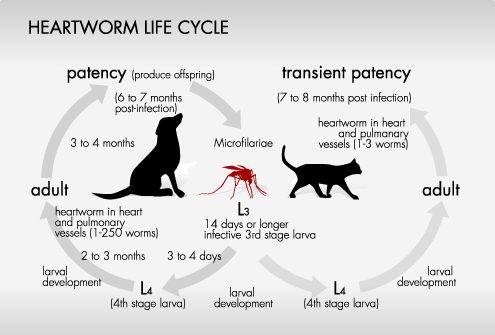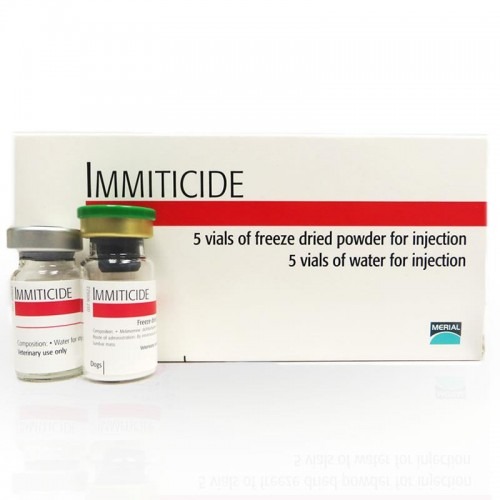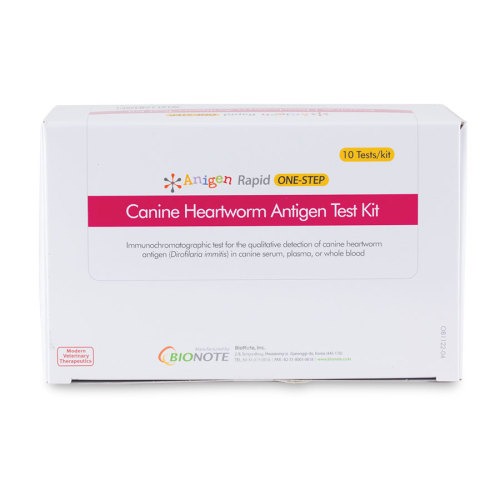I think most pet parents are familiar with term heartworm disease. They know veterinarians recommend preventative medications. In my experience, though, families don’t fully appreciate the seriousness of this condition in both dogs and cats. So, this week I wanted to take some time to explain what exactly is heartworm disease and emphasize the importance of preventative care. Happy reading!
Heartworm Disease – What is it?
Heartworm disease – also called dirofilariasis – is a serious and potentially fatal infection caused by the parasite, Dirofilaria immitis. The life cycle is very complicated, but understanding it is key to effectively preventing infection. Mosquitoes are an essential intermediate host to the complicated heartworm life cycle. Female mosquitoes first bite infected dogs, ingesting minute larvae called microfilariae. In the mosquitoes, the microfilariae mature over 10-30 days to become infective larvae. These infective larvae are then transmitted to dogs when mosquitoes bite them. Upon entering dogs, the infective larvae enter the bloodstream, migrate to the heart and adjacent blood vessels, and mature into adults over an approximately six-month period. It is important to note heartworm disease is not spread from dog to dog, cat to cat, dog to cat, or vice versa.

Heartworm disease occurs all over the world. Although once limited to the South in the United States, it is now found in most regions of the country. Given the need for mosquitoes as intermediate hosts, spread of disease coincides with mosquito season.
Heartworm Disease – What does it look like?
There is no breed or sex predilection – any dog or cat can become infected. Given the lengthy life cycle, this disease is rarely found in patients less than one year of age. Dirofilariasis is most commonly documented in patients 2-8 years of age. It can take several years for clinical signs to develop; unfortunately, the disease is well advanced by the time clinical signs are observed.

Based on the life cycle, adult heartworms are found in the heart and the adjacent major blood vessels, specifically the pulmonary arteries. In these locations, the heartworms obstruct proper blood flow to major organs like the lungs, liver, and kidneys. Affected patients may have a soft, non-productive cough and have reduced exercise tolerance. They lose stamina, are weak, and may show a shortness of breath. Chronically infected pets may have weight loss, characterized by loss of muscle. Microfilariae can similarly damage tissues – particularly the liver, kidneys, and lungs – by obstructing blood flow and subsequently oxygen delivery to vital tissues.
One of the most profound manifestations of heartworm disease is caval syndrome. This is a life-threatening condition characterized by many adult heartworms passing through the tricuspid valve. Approximately 20% of patients with heartworm disease develop caval syndrome. Proper blood flow through and out of the heart is severely compromised, pressures in the right side of the heart increase, and right-sided heart failure develops rapidly. Red blood cells are damaged and rupture inside the blood vessels. Patients with caval syndrome often have pale mucous membranes, port wine-colored urine (called hemoglobinuria), distension of their jugular veins, a right-sided heart murmur, and abdominal fluid accumulation (called ascites).
Heartworm Disease – How is it diagnosed?
Definitive diagnosis of heartworm disease requires at least one simply, non-invasive blood test. The most common type of test is called an antigen test, meaning the assay screens for special proteins (antigens) produced by adult female heartworms. There is the potential for false-negative results, as patients with less than 4-5 adult worms may not produce enough antigen to induce a positive test result. Similarly, infection with only male heartworms will yield negative results too. Veterinarians can also screen for microfilariae. This test is also a simple, non-invasive blood test called a Knott’s test. This assay allows one to directly visualize immature heartworms in the blood. This test has an ~20% false-negative rate.
Further blood and urine testing, as well as diagnostic imaging, is recommended for patients confirmed to be living with heartworm disease. These tests include:
- Complete blood count
- Serum biochemical profile
- Urinalysis
- Chest radiographs / x-rays
- Electrocardiography (ECG or EKG)
- Echocardiography (heart ultrasound)
Pet parents may find it helpful to consult with a board-certified veterinary internal medicine specialist to develop a logical and cost-effective diagnostic plan.
Heartworm Disease – How is it treated?
Killing heartworms involves multiple treatments with an injectable medication called melarsomine hydrochloride (Immiticid®). The drug kills the adult worms in the heart and adjacent vessels. The medication is injected deep into a muscle in the lower back (lumbar region). Unique bacteria called Wolbachia occasionally infect heartworms. For this reason, veterinarians may prescribe an antibiotic to kill these bacteria. Treatment is very painful. As such, patients should be hospitalized for 1-2 days for intravenous fluid therapy, pain management, and anti-inflammatory therapy.

These adult worms die and begin to decompose within a few days. As pieces of dead worms break away, they travel to the circulation to the lungs. At this location, they become lodged in small blood vessels until they are reabsorbed by the body. This resorption process takes weeks to months, making this period a very dangerous one.
It’s essential dogs receiving treatment for heartworm disease be kept as quiet as possible.
They should not be allowed to exercise for one month following treatment. They should only be taken outside on a leash to urinate and defecate. Dogs with heavy worm burdens may have a soft and mild cough for up to two months after treatment. However, dogs with the following signs should be evaluated by a veterinarian as soon as possible:
- Shortness of breath
- Severe coughing
- Coughing up breath (called hemoptysis)
- Fever
- Depression
Effective treatment requires killing microfilariae too. To achieve this goal, dogs receive another injection approximately one month later. They are subsequently started on a year-round heartworm preventative medication. Some dogs with severe heartworm disease required lifelong therapy due to permanent heart damage. Consultation with a board-certified veterinary cardiologist can be instrumental in helping determine a long-term treatment plan.
Dogs with caval syndrome require surgical removal of the adult heartworms from the body through an incision in the jugular vein. Below you can watch a video of this procedure. Viewer discretion is advised.
Heartworm Disease – Can cats get it?
Cats – including indoor only ones – can also become infected with heartworms. The clinical signs can be very subtle or dramatic, and may include:
- Coughing
- Intermittent vomiting
- Asthma-like attacks
- Loss of appetite
- Weight loss
Our feline friends are considered atypical hosts, and thus, heartworms don’t often survive to adulthood. But, they can! The worm burden in cats is typically quite low, often less than 5-6 worms. Most cats have no adult heartworms. This means heartworm disease in cats often goes undiagnosed. Cats need to have two non-invasive blood tests performed to screen for heartworm disease – an antigen test just like for dogs, but also an antibody test. Antibodies are special proteins the body makes when it has been exposed to an infectious organism like heartworms. Veterinarians may also recommend evaluating chest radiographs (x-rays) and echocardiography. Unfortunately, the drug used to treat heartworm disease in dogs can’t be used in cats, and there are no alternatives. Even though infected cats don’t have many adult heartworms, microfilariae can cause a serious condition known as heartworm-associated respiratory disease (HARD). For this reason, heartworm preventative is very important for our feline friends.
Heartworm Disease – Can it be prevented?
Heartworm disease is preventable in both dogs and cats. Heartworm preventatives work by killing immature heartworms, including the infective heartworm larvae deposited by mosquitoes and the next larval stage that develops in dogs and cats. Within 1.5 months, the final larvae can mature into adults, making preventatives completely useless! Heartworms must be eliminated before they reach the adult stage because heartworm preventative drugs have no effect on adults. Therefore, it’s important heartworm preventatives be administered strictly on schedule to prevent immature larvae from molting into adults.
The take-away message about heartworm disease…
Heartworm disease is a serious parasitic infection caused by Dirofilaria imitis. Using mosquitoes as an integral part of their life cycle, heartworms can cause serious and potentially fatal disease in dogs and cats. Although treatment is available for dogs, no definitive therapies are currently available for cats. For both canines and felines, the best course of action against heartworm disease is to prevent it with heartworm preventative medications available from primary care veterinarians.
To find a board-certified veterinary internal medicine specialist and board-certified veterinary cardiologist, please visit the American College of Veterinary Internal Medicine.
Wishing you wet-nosed kisses,
CriticalCareDVM







